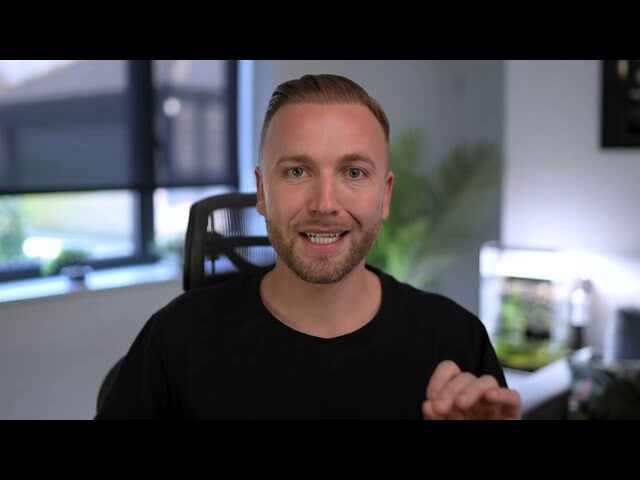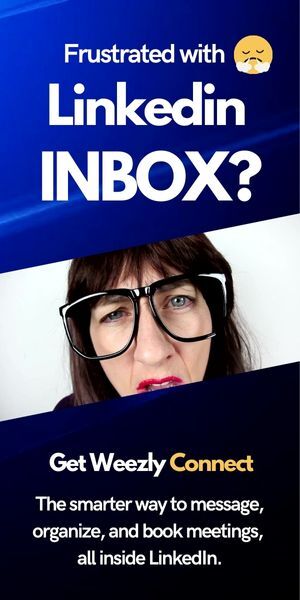Cold email remains one of the most powerful channels for generating business opportunities—if you understand how to stand out in an ever-crowded inbox. The primary topic of this article is mastering attention hooks in cold outreach, a skill that separates successful sellers from everyone else.
Year after year, business owners send thousands of outreach messages hoping to book meetings, but most fall flat, lost to deletion or unconscious filtering. What’s the difference between standard messages and the rare few that reliably spark replies? It’s not a better offer or more guarantees—it’s the art of capturing attention in the first seconds.
Here, you’ll learn a proven strategy to book more sales calls with fewer emails, gleaned from years of hands-on experience and real-world results. Whether you’re an agency, freelancer, or SaaS founder, these insights will help you write cold emails readers actually want to answer.
Based on the original video:
Why Most Cold Email Outreach Fails—And How to Fix It
The average business receives well over 100 emails daily, triggering automatic mental processes that filter most messages as spam or irrelevant before they’re even consciously noticed. Even if your emails get opened, most are processed in under two seconds—and if they read as routine or generic, they’re quickly dismissed.
The problem isn’t usually your offer. Many focus on refining guarantees or risk reversals, but those alone won’t help if your email never gets a fair shot. Instead, the underlying issue is cognitive miserliness: recipients quickly judge if your message is worth their attention, filtering out anything that lacks immediate relevance, novelty, or ease of processing. This creates a high bar for initial engagement.
Key takeaways about why cold email often fails:
- High email volume makes standing out essential
- Readers process messages subconsciously in seconds
- Generic personalization and benefits signal automation
- Transactional, mass offers now breed mistrust, not interest
To truly win at cold outreach, you must change the way conversations start—mastering the all-important attention hook.
The Make-or-Break Role of the Attention Hook in Cold Email
An attention hook is the opening line (or subject line) designed to interrupt auto-pilot scanning and compel the recipient to pause. Its goal isn’t to sell or even explain—it’s simply to earn the privilege of being read. In today’s world of endless content across platforms, your outreach is competing with countless other distractions. Only the emails that break mental patterns get read.
Consider the typical inbox. If every cold approach sounds like “I help you get more appointments, guaranteed,” or “Quick question, [First Name],” you quickly fall into the mental category of “irrelevant sales pitch.” This results in indifference, with your message ignored along with hundreds of others.
But by introducing novelty, flattery, genuine curiosity, or highly specific personalization, you can set yourself apart and build the kind of trust that leads to replies and booked meetings.
Real Email Outreach Examples: What Not to Do
Most business owners are bombarded with lifeless, generic emails such as:
- “Hi [Full Name], I’ve been following your channel and really enjoy your content…”
- “We help [role] automate sales 24/7 with best-in-class funnels…”
- “Your marketing mindset is straight up elite. Got a quick idea for you…”
Despite attempts at personalization, these often use templated phrases or fake familiarity that’s easy to spot. Recipients instantly categorize such messages as mass outreach and ignore them. Others make the mistake of leading with generic guarantees or “quick questions,” both of which have become spam triggers due to overuse.
The solution? Stop copying played-out scripts and learn to grab attention with fresh tactics rooted in psychology and authentic engagement.
The Psychology of Effective Attention Hooks
To consistently book meetings with fewer emails, you need to understand the science behind what makes a recipient pause, lean in, and keep reading. There are several neurological triggers at play:
- Pattern Disruption: The brain notices what breaks its automatic routines. Unusual phrases or formats stand out from the sea of sameness.
- Ego Relevance: Messages about the reader (“I noticed X you did”) command more attention than generic statements. Flattery, when sincere and specific, resonates deeply.
- Status Signals: We prioritize content that makes us feel important or admired—especially when it shows genuine appreciation.
- Curiosity Gaps (The Zeigarnik Effect): By posing an open loop—an incomplete idea or unanswered question—the brain is compelled to seek closure, prompting the recipient to keep reading to find the answer.
For instance, compare shouting “We have the best shoes in town!” (ignored) versus calmly saying, “I noticed something unique about your shoes.” The latter evokes curiosity and initiates a more personal conversation.

Why Imitating Old Formulas is a Dead End
Techniques that once worked—like bold guarantees or “quick question” as a subject line—lose their power once they become widespread. Today, recipients have subconscious defenses against anything that smells of automation or cliché. Even email providers may filter overused hooks as promotional or spam due to their association with low-trust senders.
Successful outreach now depends on being the first to invent, not copy, new approaches. If you simply mimic others, you’ll only get short-term results until prospects catch on and awareness cycles out.
Unfair Spikes: Levers to Dramatically Boost Email Response Rates
There are a few overlooked techniques that, when applied, can take your cold email results to another level.
1. Locality: Making the Digital Personal
Cold emails typically feel impersonal and detached. If you can mention that you’re local to the recipient—by referencing their town or community—you instantly humanize the interaction. The recipient can imagine you as a real person nearby, which builds trust and invokes social pressure to reply.
Agency founders, for instance, can see higher reply rates simply by stating they work locally. This is especially helpful when you’re just starting out and need to become memorable despite lower volume.
2. Blue Ocean Niches
Some industries (or sub-niches) are less bombarded by outreach. When your offer feels new, fresh, and not recycled, recipients can’t easily box you with 100 similar pitches, making them far more likely to respond. This applies both to your industry and your specific value proposition. For example, AI-enabled services still feel novel compared to standard Facebook ad management, and thus evoke less resistance.
For deeper insights into creative B2B lead generation tactics, explore this guide on proven B2B lead gen offers that break through competitive markets.
3. Breaking Cognitive Categorization
Prospects sort new emails into boxes based on their past experience. Your goal: smash out of the “same old” box using a crowbar—the attention hook. It’s this initial line that either earns you further mindshare or relegates you to the mental recycle bin.
Five Attention Hooks That Work Now (With Examples and Frameworks)
Here are proven attention hook styles to test and tailor. For best results, make each one uniquely yours rather than copying word-for-word.
1. The Curiosity Hook
Break expectations and leave the reader needing more context. Example:
- “This probably isn’t what you expected, but I had to reach out…”
- “There’s something about your last campaign I couldn’t ignore.”
By being ambiguous but intriguing, you invite the recipient to read on for the answer.
2. The Ego Trigger
Deliver a personalized, genuine compliment based on specific content or achievements. Example:
- “Your recent [X] campaign—genius.”
The more specific and authentic the praise, the more it taps into the recipient’s self-identity. Mentioning the exact campaign, video, or post and sharing what resonated amplifies impact.
3. The Open Loop
Start with an incomplete statement or unresolved observation, motivating the recipient to seek closure. Example:
- “There’s something I noticed that [competitor] is doing better than you…”
This introduces gentle competitive tension and curiosity. Place the resolution further down in your email, encouraging the reader to keep going.
4. Hyper Relevance
Reference a specific, recent action, post, or achievement unique to the recipient. Example:
- “I saw your tweet about [topic]—totally agree with your point on [detail].”
- “Your latest review of [venue] caught my attention—love your take.”
Unlike generic personalization (“I love your channel”), referencing granular details shows real research and makes it hard to dismiss your email as automated.
5. Unexpected Pattern / Pattern Flip
Subvert recipient expectations to disarm their defenses. Example:
- “This email isn’t about increasing your revenue.”
- “Surprisingly, it’s not about growth, but about keeping what you’ve earned.”
This approach stands out in crowded, saturated niches, where every competitor leads with the same value proposition. By taking a contrarian stance, you force the recipient to pause and reconsider their assumptions.
Why Simply Copying “Proven” Cold Email Scripts Misses the Mark
Copying word-for-word templates might bring a short burst of results, but once they’re overused, they lose all novelty and quickly wind up in mental and technical spam folders. The true winners in cold outreach create, test, and iterate on unique frameworks—using their understanding of psychology and their vertical.
Be the first at the table, not the last picking up scraps. Innovate your own hooks tailored to your prospect’s context, industry, and even geographic location. As cycles change and the market adapts, those who think critically and creatively consistently outperform copycats.
Special Note: Closing the Curiosity Loop Matters
If you open a curiosity gap or “loop” in your hook, ensure you eventually resolve it—either in the body or at the call-to-action. Leaving readers hanging can backfire unless it’s artfully done and relevant to your offer.
Putting It All Together: Crafting Your High-Response Outreach Workflow
To recap, here’s a quick roadmap for building an outreach process that maximizes conversions:
- Research your prospect: Go beyond surface-level personalization and find real points of connection or insight (posts, campaigns, awards, community involvement).
- Decide on your hook style: Choose between curiosity, ego, open loop, hyper relevance, or pattern flip based on your industry and prospect profile.
- Write your first line for attention—not to sell: The only job of your opening is to interrupt the scan and earn a few more seconds of attention.
- Build emotional momentum: Follow with value that aligns with the initial hook, leading the recipient smoothly to your ask or call-to-action.
- Test and iterate: Rotate hooks and measure results. The best frameworks will change over time as markets adapt, so always stay ahead of the curve.
If you’re looking for ways to further improve email deliverability (so your attention hooks get a fair chance), check out these six key steps to keep emails out of spam.
FAQ: Mastering Attention Hooks in Cold Outreach
What is an attention hook in cold email outreach?
An attention hook is the opening line of your email that disrupts the recipient’s scanning habit, piques curiosity, and compels them to read further. Its sole purpose is to earn attention long enough for your value proposition to be considered.
Why do most personalized cold emails fail even when using first names?
Most cold emails fail because they use generic personalization and phrases that have been overused. Buyers immediately recognize these as automated scripts and dismiss the message before engaging. True personalization involves relevance and specificity that’s unique and difficult to fake.
How can I make my cold email stand out in a crowded inbox?
Break the pattern by avoiding tired scripts, leveraging authentic curiosity, mentioning highly specific details, and using surprise or status signals. Focus on techniques like local references or blue-ocean offers to further set yourself apart.
Can I automate attention hooks at scale?
Yes, sophisticated outreach tools and AI can help automate aspects of research and personalization, enabling unique hooks at scale. However, always reserve a portion of your outreach list for deeply customized, manual effort—especially for high-value prospects.
What role does emotion play in successful outreach?
Emotion is crucial—it transforms a transactional message into a human conversation. Invoking emotion through flattery, status, or genuine curiosity makes recipients more likely to reply and book a call, especially as trust in generic automation declines.
